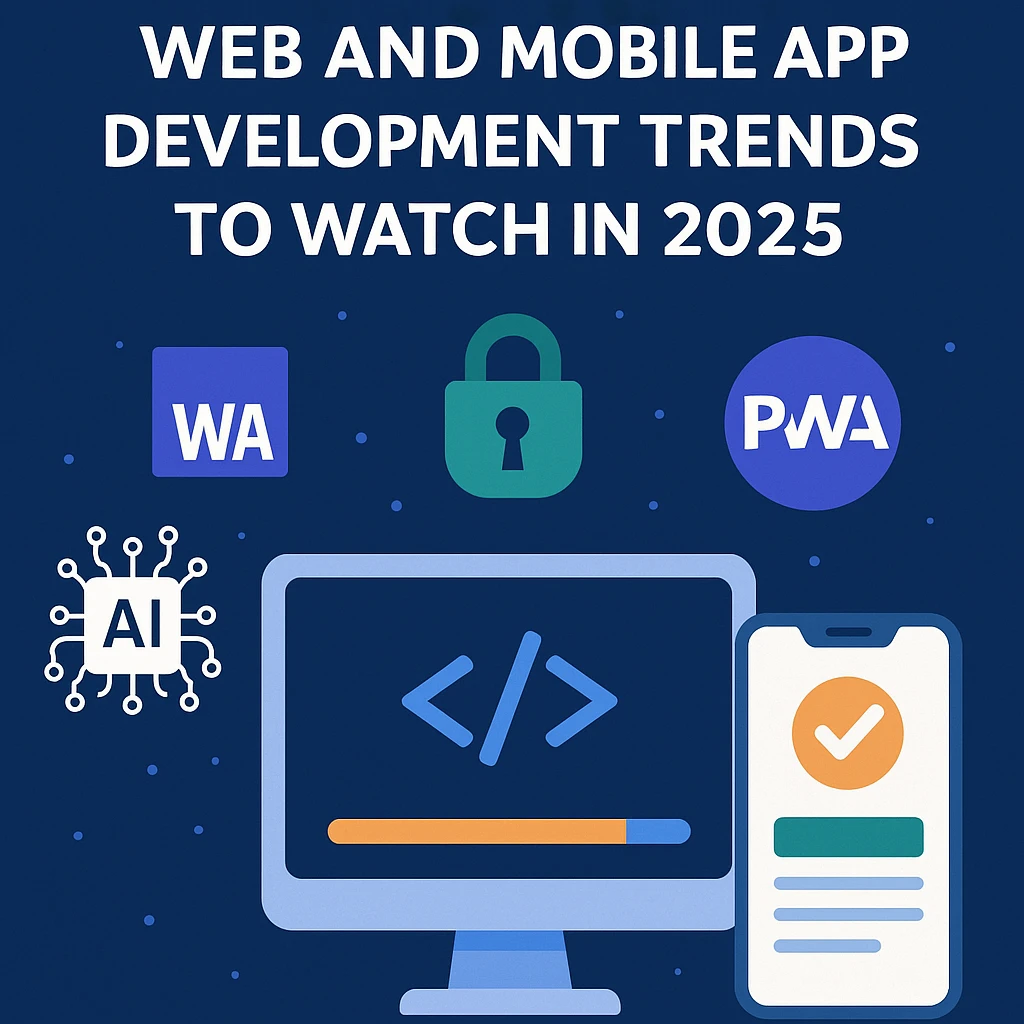The digital world evolves fast. Technologies that were cutting-edge just a few years ago are now baseline expectations. In 2025, user behavior, device capabilities, and business needs continue to redefine how web and mobile apps are built.
To stay ahead of the curve, companies need to understand not just what the trends are—but why they matter. Here's a look at the most impactful web and app development trends shaping the future.
1. AI-Driven Apps: From Features to Entire Experiences
Artificial Intelligence isn’t a bonus feature anymore—it’s becoming the backbone of modern apps. Whether it's chatbots, personalized recommendations, or voice assistants, AI is shaping smarter, adaptive experiences.
What to Expect:
- Apps that learn from user behavior
- Predictive analytics in dashboards
- Conversational UIs (voice + text)
- AI-generated content & visuals
💡 Pro Tip: Integrating tools like OpenAI’s GPT or Google’s Gemini into your app adds intelligent layers without heavy lifting.
2. Lightning-Fast Performance with WebAssembly (Wasm)
WebAssembly is enabling near-native performance in the browser. That means complex operations—like video editing, gaming, or real-time data processing—can now be handled in a web app, blazingly fast.
Why It Matters:
- Users expect speed.
- Wasm bridges the performance gap between native apps and the browser.
- Opens new frontiers for browser-based applications.
3. Progressive Web Apps (PWAs) Get Even More Powerful
PWAs have evolved massively. With features like offline support, push notifications, and background sync, they’re closing in on the native app experience.
Why Businesses Love PWAs:
- One codebase for web + mobile
- Lower development and maintenance cost
- SEO-friendly and installable
- No app store approval needed
In 2025, expect PWAs to go mainstream, especially for startups and SMEs looking for cost-effective mobile solutions.
4. Cross-Platform Development with Flutter & React Native
With tech like Flutter 3 and React Native becoming more mature, cross-platform development is now a smart business move, not a compromise.
Benefits:
- Faster time to market
- Shared codebase (iOS + Android)
- Beautiful UIs with native performance
- Strong community and ecosystem
Flutter especially is gaining momentum with web, desktop, and embedded support.
5. Security-First Development
Cyber threats aren’t slowing down. From data breaches to API abuse, the risks are real. In 2025, developers are expected to embed security into every phase of the app lifecycle—not just the launch.
Key Security Practices:
- End-to-end encryption
- OAuth 2.0 & token-based auth
- Secure code reviews
- Server hardening and DevSecOps
Apps that aren’t secure won’t just lose users—they’ll get penalized in search and app stores.
6. Sustainable and Accessible Tech
Modern users care about ethics and accessibility. In 2025, apps that are energy-efficient, accessible, and inclusive will stand out.
What to Focus On:
- Dark mode and battery optimization
- Screen reader compatibility
- Lightweight frameworks and green hosting
- Inclusive UX design
Sustainability is no longer a marketing slogan—it’s part of the product design process.
7. No-Code & Low-Code Platforms
No-code/low-code tools are reshaping MVP development. Startups can validate ideas without hiring large dev teams, and enterprises can speed up internal tool creation.
Popular Platforms:
- Bubble
- OutSystems
- FlutterFlow
- Webflow (for websites)
These tools are democratizing development and letting devs focus on the complex stuff.
Final Thoughts
Staying relevant in 2025 means adapting to the new wave of expectations and tools. Whether it's smarter AI integrations, blazing-fast web tech, or security-focused dev cycles, businesses that invest in modern development will build better products—and trust.
Need a Future-Ready App?
At Nova Semantics, we don’t just build websites and mobile apps—we craft digital experiences that are secure, scalable, and aligned with the future.
👉 Consult with our experts today to bring your next big idea to life.




